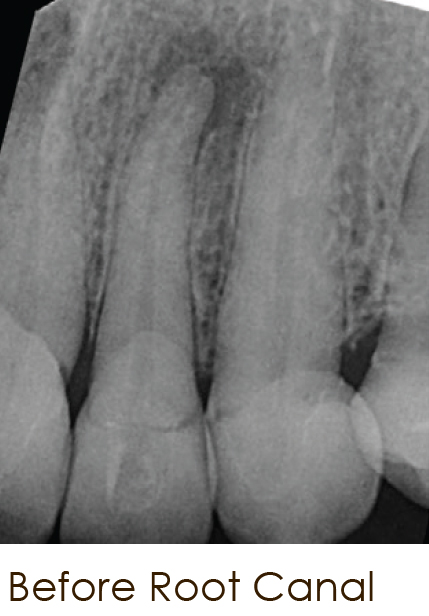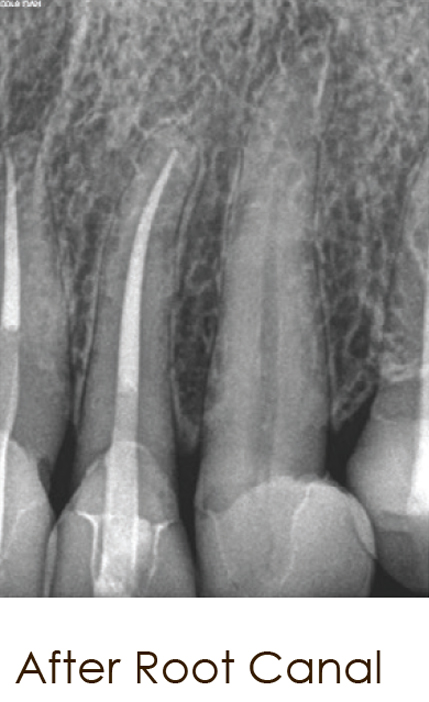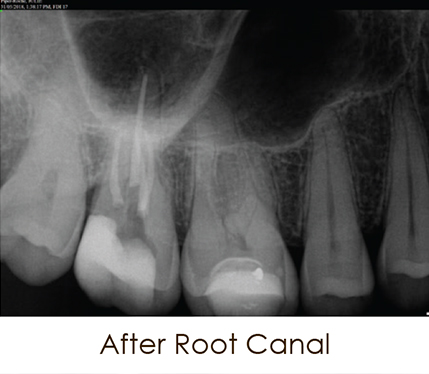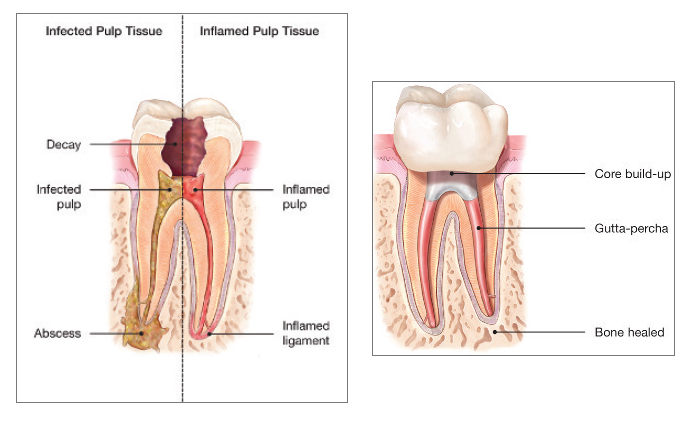Comfortable Root Canal Therapy with Modern Techniques
Root Canal
Therapy is needed when a patient presents a tooth damaged by extensive caries or if the tooth is damaged from an injury. The dentist begins by creating an access from the chewing surface of the tooth to enter the tissue of your tooth. He will then remove the infected tissue with files and flush out the infection. The root, now free of tissue, is sealed with a special dental material and the core is filled with a temporary material that is later removed when preparing the tooth for a crown. Typically, a crown is needed to restore the tooth to its optimal strength but not every crown requires a root canal.
ROOT CANAL TREATMENT
Root canal treatment is performed when the nerve inside a tooth has died or become irreversibly inflamed or infected. The treatment includes removing the tooth’s nerve tissue, cleaning and disinfecting inside the nerve canal, and then sealing the nerve canal.
Frequently Asked Questions
1. What would cause the nerve of a tooth to die or become infected?
- The nerve of a tooth can be damaged if a tooth is cracked or fractured. Deep decay or trauma, like a blow to the tooth or from a fall may also cause damage.
- Even when carefully performed, every filling and crown has an impact on the tooth’s nerve health, so teeth with large fillings or crowns are more likely to need a root canal.

2. What are the benefits of having root canal treatment?
- A tooth can be saved that would otherwise have to be removed due to infection or nerve damage.
- Chronic inflammation that occurs with infection may be eliminated. This inflammation is harmful to your overall health and the infection can spread to other parts of the body, including your brain and heart, and can be fatal.
- Pain or sensitivity caused by the damaged nerve can be relieved.

3. Are there risks associated with root canal treatment?
- Although 90% of root canal treatments are successful, a small number will require a second root canal procedure or additional treatment on the root tip.
- Even with the best care, root canal treatment may not resolve all the infection or inflammation. In those cases, the tooth may still be lost, usually due to a hidden deep crack in the tooth or a root canal system too small to be adequately cleaned and sealed.

4. Will further treatment be needed following root canal treatment?
- On a back tooth, a crown is needed to lower the risk of future cracking or fracture from chewing forces. If the tooth already has a healthy, well sealed crown, the dentist may be able to seal the root canal without replacing the crown.
- A front tooth in good condition may only need a bonded filling to seal and support it. Your dentist will discuss what support your specific tooth will need.

5. Are there any alternatives to undergoing root canal treatment?
- The only alternative would be to remove the tooth.
